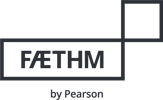Faethm’s recent Solving the Skills Shift webinar on strategic workforce planning brought together...
3 Unique Advantages for Leaders Using Faethm Skills Data
How can HR leaders hope to keep up with the rapid and accelerating pace of change in technology and the skills market? With workforce skills data and adaptive workforce modelling, leaders are empowered to keep their organization's supply of talent and skills ahead of the curve, ensuring their business has the right skills at the right time to execute their objectives.
Workforce skills data providers generally source their data from hundreds of millions job postings, resumes, and online profiles. Typically, an algorithm will scan through these vast numbers of job descriptions to identify the skills associated with those jobs. Sadly, many data providers do not have sophisticated AI that can read and understand job ads or online profiles the way a human can. This makes for millions of errors in their data.
Luckily, there is an AI technology called Natural Language Processing (NLP) that can understand written text the same way a human does. As a global leader in NLP, Faethm is able to extract skills data from hundreds of millions of job profiles with a high rate of accuracy. With this, Faethm skills data provides leaders with three unique advantages.
1. More accessible, simplified, and workable skills ontology
There’s an ever-increasing number of versions and variations of the same or similar skills. For example, in the computer programming profession, there are 27 versions of the programming language Python: from Python 1.0 to Python 3.0. HR, Talent, L&D, and workforce planning practitioners cannot be expected to know or learn about the minor differences between all of the flavors of practically the same skill. Yet, workforce skills data providers feed HR practitioners long lists of synonymous and esoteric skill flavors—duplicates—which not only is not helpful but wastes the HR practitioner’s time and energy having to look these up.
Since Faethm’s AI can understand the descriptions of skills, it can match and group synonymous or near identical skills together in a way that no other data provider has been able to do. While other data providers may boast about having an ontology of 90,000 skills, Faethm offers a “smaller” (yet still comprehensive) ontology of just under 9,000 unique skills. Faethm’s ontology has essentially “removed the fat” for more relevant and easier to digest skills data.
2. More accurate data, more reliable forecasting of skills
Job descriptions often contain skill keywords that are not relevant to the job itself. For example, a job posting for a nurse may list “Botany Bay” as the hospital location. Without Natural Language Processing (NLP) technology that can differentiate between skill names and names of places like a human would when reading a job ad, workforce skills data providers might list “botany” as a skill for nursing jobs. Considering that there are millions of job postings scanned in this way, imagine the sheer volume of errors and noise in these skills data ontologies.
Imagine if you wanted to understand the demand for a particular skill, and that skill is also present as part of other skills in other occupations. For example, the “GCP” (Good Clinical Practice) skill in nursing and the “GCP” (Google Cloud Platform) skill in cloud architecture are completely different skills. The algorithms used by many skills data providers cannot understand context - they just scan for keywords, meaning they would misinterpret the data when analyzing demand for GCP engineers in cloud architecture. Imagine the consequences if you receive incorrect data showing the GCP skill in cloud architecture is in high demand because of the popularity of other skills called “GCP”.
It's no secret that job skills data is the lifeblood of workforce strategy. The accuracy your job skills data is vital to the accuracy of your modelling and forecasting, especially in strategic workforce planning (SWP). It is well known that the more variables in a model, the lower it’s analytical and predictive accuracy. By eliminating duplicates and errors, Faethm streamlines workforce skills into a tight ontology of <9,000. Minimizing the number of variables in its modelling allows Faethm to offer more accurate analysis and forecasts than alternatives.
3. Faster path to upskilling, reskilling, and credentialing
HR and L&D leaders need insights into their workforce’s current and future skills gaps, along with an actionable L&D plan and relevant content to close those gaps as quickly as possible.
As part of the Pearson ecosystem we have combined workforce skills data with data linking skills to learning content and credentials. So our offerings now include access to learning content descriptions from the world’s largest educational content provider, Pearson, and job and skill credentials in Credly. Faethm’s AI, using the same technology outlined above, will be able to read, understand and analyze a vast volume of learning materials and credential descriptions.
The Job Corridor feature of Faethm, one of its most powerful features, allows practitioners to visualize the skills gap between a current role and that role in the future, toward which they would need to upskill an employee. Identifying the skills gap between a current role that has excess supply and diminishing demand, and a target role, for which there is high demand. The Job Corridor will show you where there is a small, moderate, or large overlap between the skills required for two roles.
Armed with the above combination of the Job Corridor and data that maps skills to content and credentials, Faethm customers can make better decisions about which skills to invest in and develop, accelerating their workforce's path to upskilling, reskilling, and credentialing. By shortening the time it takes employees to reskill and upskill, the organization will strengthen its workforce agility, which in turn will help it respond more quickly to an increasingly turbulent business environment.
Other advantages to using the world’s best workforce skills data
This is just the tip of the iceberg, there are many additional benefits to using workforce skills data that is accurate, reliable, and scalable. Connect with our team of experts today to find out how we can help keep your organization informed and ahead of the curve.


%20(2).png?height=200&name=SWP%20Hero%20(1200%20x%20627%20px)%20(2).png)

